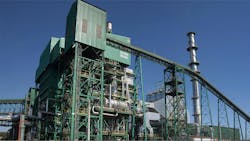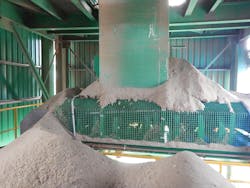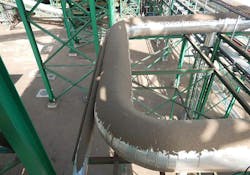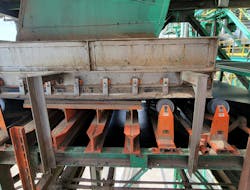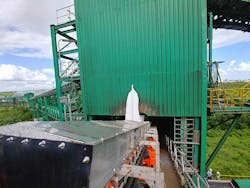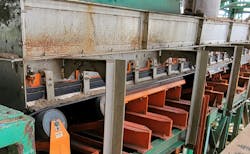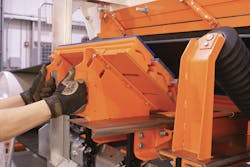Cleaning clean energy: Dominican power plant resolves conveyor dust and spillage
Sustainable power production
Clean energy, dirty conveyors
Modern transfer point design
Beyond air circulation, another reason the enclosure chute height was raised was to allow for wear liners and dual-efficiency skirting. Along the enclosure, brackets were placed and thick wear liner plates were installed to protect the chute wall from the punishing environment inside the loading and settling zones. Commonly, wear liners are welded to the inside of the chute, requiring chute entry and hot work to remove. The external wear liners are easily swapped out from the outside of the system, reducing labor and improving safety. The skirt seals are specially designed one-piece polyurethane strips that stretch down the length of the chute and seal the enclosures to the belts, preventing the escape of fines and dust. Mounted on the outside of the chute walls for simple external maintenance, they float on the belt surface and self-adjust to maintain an effective seal without maintenance. When the bottom side is worn, the skirting strips can be flipped over, extending their operational life and reducing equipment costs.
Retrofitting conveyor efficiency
About the Author

Shane Tighe
Shane Tighe is territory manager at Martin Engineering. Tighe immigrated to the U.S. in 1984 with an associates degree in business management and worked as a general manager and sales associate providing mobile crushing and screening equipment to different industries. With over 35 years of experience in the industry, the majority with Martin Engineering, Shane has been Territory Manager for the Southeast region for 26 years, responsible for managing service technicians and growing the region to over 7 million dollars. His material knowledge ranges from flow-aid products that prevent plugging and increasing production to conveyor products that reduce spillage and dust on a wide range of different materials in this industry. His goal is to provide the best possible solution at a cost that is satisfactory to the customer and untimely create a long and lasting relationship.
